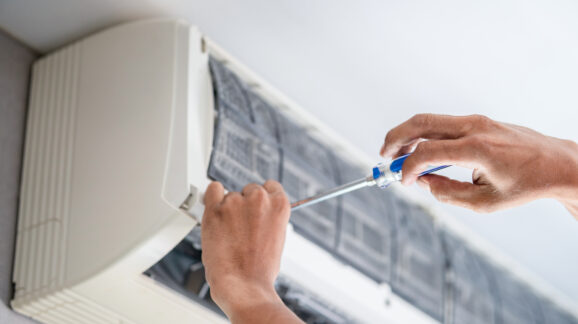How to Beat the High Cost of Cooling
Biden climate rules made air-conditioning more expensive. Trump and Congress can reverse them.
President Trump doesn’t hide his dislike of federal appliance regulations, from water-stingy shower heads that he says make it difficult “to take care of my beautiful hair” to new energy-efficient lightbulbs that make him “look orange.” His administration has initiated steps to dial back many such rules. His next priority should be one of the most overregulated appliances—residential central air-conditioning systems.
Home air conditioners fall under the jurisdiction of two hyperaggressive federal agencies, the Energy Department and the Environmental Protection Agency. The Energy Department’s latest efficiency standard for these systems took effect in 2023 and knocked the most affordable models off the market.
Not to be outdone, the Biden EPA issued a rule requiring that systems manufactured after Jan. 1, 2025, use refrigerants that meet new climate-change requirements. This mandate has increased costs by $1,500 per system on average, says Martin Hoover, president of Atlanta-based Empire Heating & Air Conditioning. Mr. Hoover says the higher price is due to both increased equipment prices—systems had to be redesigned for the new refrigerants—and higher labor costs, since these refrigerants are more flammable and require additional precautions during installation. To make matters worse, an EPA-compliant green refrigerant that many equipment makers use, R-454B, is in short supply, and prices have risen substantially.
These and other regulations, combined with nonregulatory factors such as higher materials costs and rising wages for service technicians, have dramatically increased the cost of buying and installing a new system. A homeowner replacing a 15-year old system that likely cost around $5,000 at the time of installation now faces a price tag “in the $13,000 to $14,000 range,” Mr. Hoover says.
The good news is that EPA Administrator Lee Zeldin plans to reconsider this rule. Rolling it back won’t be easy, however, as manufacturers in this sector now enjoy a captive market for their costlier but supposedly planet-saving systems. Indeed, many manufacturers took the same side as climate-change activists in petitioning the Biden EPA for this rule. To champion the cause of beleaguered homeowners, the Trump administration will have to stand firm against manufacturers’ challenges.
Reversing the Energy Department rule will also be difficult, as the underlying statutory provisions generally preclude a new efficiency regulation less stringent than the one it replaces.
Even if Mr. Trump’s regulators succeed in making these reforms, a future administration could reverse them. The more durable solution for air conditioners and other overregulated appliances—including dishwashers, furnaces, stoves and washing machines—would be for Congress to put statutory limits on federal meddling. Such legislation would need bipartisan support, but a recent congressional vote repealing an onerous water-heater regulation suggests that a broader reform bill would stand a chance.
Read the full article at the Wall Street Journal.
